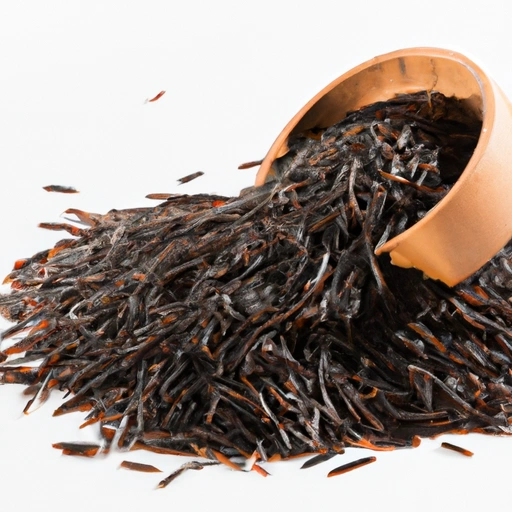Wild Rice
Description

Wild rice is not your typical rice; it is actually a seed of an aquatic grass native to North America. These long, slender grains have a chewy outer sheath with a tender inner grain and a nutty flavor. Wild rice is typically darker in color, ranging from brown to black, and is praised for its robust taste and high nutritional content.
Common uses
Wild rice is a versatile ingredient and can be used in a variety of dishes, from soups and salads to stuffings and pilafs. It is also commonly mixed with other types of rice for textural contrast and visual appeal.
Nutritional value
Calories
In 100 grams of cooked wild rice, you will find approximately 101 calories (423 kJ).
Protein
Wild rice is a good source of protein, offering about 4 grams (0.14 oz) per 100 gram (3.5 oz) serving.
Fat
This grain contains a minimal amount of fat, with roughly 0.3 grams (0.01 oz) per 100 gram (3.5 oz) serving.
Carbohydrates
Wild rice provides about 21 grams (0.74 oz) of carbohydrates per 100 gram (3.5 oz) serving.
Vitamins
It is also rich in B-vitamins, particularly niacin (vitamin B3) and folate (vitamin B9).
Minerals
Rich in minerals, wild rice contains phosphorus, magnesium, and zinc, as well as a significant amount of manganese.
Health benefits
Wild rice is a nutrient-dense food associated with numerous health benefits. Its high fiber content can aid digestion, while the protein and carbohydrates provide long-lasting energy. The presence of antioxidants may help in reducing the risk of chronic diseases. Additionally, being gluten-free, wild rice is a suitable grain for those with gluten sensitivities or celiac disease.
Potential risks
While wild rice is generally considered safe for most people, it is important to consume it in moderation due to its high fiber content, which can cause digestive issues in some individuals. Moreover, wild rice harvested from polluted waters may contain harmful contaminants, so sourcing from reputable suppliers is crucial.
Common recipes
Wild rice is commonly found in recipes such as wild rice soup, pilaf, casseroles, and salads. It is also used as a stuffing for poultry or vegetables.
Cooking methods
It can be boiled or steamed until the grains puff open, revealing the creamy white interior. Cooking times vary but typically fall between 45-60 minutes. Cook with a ratio of about 1 cup (240 mL) wild rice to 3 cups (710 mL) water or stock, and adjust to your preferred texture.
Pairing with other ingredients
Wild rice pairs well with earthy flavors such as mushrooms and herbs like thyme and rosemary. It also complements the sweetness of dried fruits and the richness of nuts, making it a versatile component in both savory and sweet dishes.
Summary
Wild rice is a nutritious and unique food ingredient that adds flavor, texture, and nutritional value to a myriad of dishes. Its historical significance and culinary flexibility make it an esteemed choice for chefs and home cooks alike. As a culinary staple that transcends cultural boundaries, wild rice offers a delicious way for people around the world to enhance their cooking repertoire using both traditional and innovative recipes.